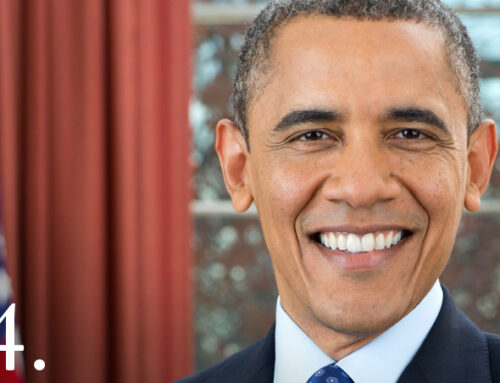Herbert Hoover was the 31st President of the United States, serving from 1929 to 1933. He was born on August 10, 1874, in West Branch, Iowa, and grew up in a Quaker family. Before entering politics, Hoover was a thriving mining engineer and businessman and played a key role in the U.S. government’s response to World War I.
Hoover’s presidency is most often remembered for the economic crisis during his tenure: the Great Depression. When Hoover took office, the U.S. economy was already experiencing a downturn, but the situation worsened significantly in the following years. Despite efforts to address the crisis, including the passage of the Reconstruction Finance Corporation Act in 1932, unemployment remained high and the economy continued to decline.
One of the most significant events of Hoover’s presidency was the stock market crash of 1929, which is often considered the start of the Great Depression. In response to the crash, Hoover called for a voluntary moratorium on securities trading to stabilize the markets. However, this measure was ultimately ineffective, and the economy continued to deteriorate.
Hoover’s handling of the economic crisis was heavily criticized, and Franklin D. Roosevelt defeated him in the 1932 presidential election. After leaving office, Hoover remained active in public life, serving on various committees and commissions. He died on October 20, 1964, at the age of 90.
Despite the challenges he faced as President, Hoover was a dedicated public servant who worked tirelessly to address the economic crisis of the Great Depression. He may not have been successful in solving the crisis, but his efforts laid the groundwork for the reforms and policies implemented by his successor, Franklin D. Roosevelt.
“If a man has not made a million dollars by the time he is 40, he is not worth much”, That’s what Herbert hoover said, and rightfully so. But the life of this president was not at all straight. You will be shocked if I tell you about his first job.
President Herbert Hoover’s first job was picking bugs off potato plants. He was paid one dollar per hundred bugs. Hoover would later study geology at Stanford University and go on to make a fortune in the mining business. Not long after graduating from Stanford, Hoover went to work in Australia’s goldfields. His starting inflation-adjusted salary is $133,000. Hoover eventually moved up the ranks to become a mining industry executive. He was also a shrewd investor — so much so that Hoover eventually amassed an inflation-adjusted net worth of $71 million, over a billion dollars today) after his death, he donates it all.
Seems all that paid off. Because Hoover was worth $75 million (over a billion dollars today) and donated his presidential salary to charity.
As I am writing about what to learn from him, it will not be right If I didn’t mention his thoughts on the economy. Hoover was an advocate of laissez-faire economics. He believed an economy based on capitalism would self-correct. He felt that economic assistance would make people stop working. He believed business prosperity would trickle down to the average person. I am not shocked but during his time, that was the reason why US businesses started looking like MNCs. Beyond doubt, Trikkled down theory is not working and as I am very much Keynesian, I praise his successor. The only president who received more than 2 presidential terms.
Herbert hoover can be stated among the worst president when you made list as per market performance. It’s clear why. Republican president holding office during the onset of the Great Depression in the United States.
When Hoover took office in 1929, the economy was thriving. However, the stock market crash of 1929, also known as the Great Crash, occurred just months into his presidency. The crash was followed by the Great Depression, which lasted for several years and had a profound impact on the country’s financial landscape.
Hoover’s approach to the Great Depression was to emphasize individual initiative and voluntary action, rather than government intervention. He believed that businesses and individuals, rather than the government, should take responsibility for solving the economic crisis.
Hoover implemented several policies aimed at boosting the economy, including increased public works spending, increased tariffs, and efforts to promote voluntary cooperation between businesses and workers. However, these policies did not have the desired effect, and the economy continued to suffer.
Hoover’s approach to the Great Depression was criticized for not doing enough to address the economic crisis. Many believed that his emphasis on individual initiative and voluntary action was not enough to solve the problem and that more direct government intervention was necessary.
President Hoover’s approach to the Great Depression serves as an example of how a leader’s financial policies can have a significant impact on the country’s financial landscape, particularly during a crisis. It also showcases the challenges of addressing a major economic crisis and the criticisms that may arise when a leader’s policies are perceived as not doing enough to address the problem.
Historians judge Herbert Hoover to be one of the worst United States presidents. ever had. Hoover took office just months before the 1929 crash that ushered in the Great Depression and a decade of the worst bear markets in U.S. history. That was bad luck. But Hoover made conditions worse by signing into law the Smoot-Hawley Tariff Act. Over a thousand economists warned him it would exacerbate things. It did, turning what might have been a modest recession into the worst depression in U.S. history. His stewardship of the Depression was hapless. President Hoover remains the worst president for financial innovation and the market performance during his administration reflects it: a 30.8% annualized compound loss.
This all makes me think. Why? didn’t he see it all coming? what was his education? forget it, advisors were telling him. So he was not learning anything from President Lincoln. But as an analysis of his career is not the subject of this blog post, I don’t want to go there. I wrote what I found and here I kept this all in front of you.




